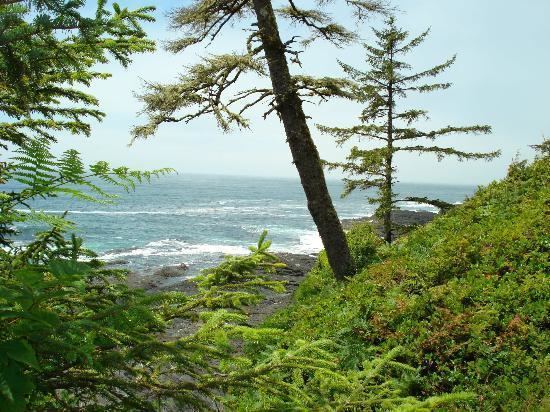Country Canada Incorporated December 7, 1999 Highways 14 Area 56.62 km² Local time Sunday 8:50 PM | Time zone PST (UTC−8) Elevation 50 m Population 13,001 (2016) | |
 | ||
Weather 7°C, Wind W at 8 km/h, 95% Humidity | ||
The official sooke british columbia tourism video
Sooke /suːk/ is a district municipality situated on the southern tip of Vancouver Island, Canada. About 38 kilometres by road from the city of Victoria (the capital of British Columbia), Sooke is considered the westernmost of the Greater Victoria region's "Western Communities." It is situated to the north and west of the Sooke Basin.
Contents
- The official sooke british columbia tourism video
- Map of Sooke BC Canada
- Sooke b c
- Education
- Tourism and recreation
- Arts community
- Real estate
- Neighbourhoods
- Neighbouring communities
- Publications
- Notable residents
- References
Map of Sooke, BC, Canada
Sooke b c
Education
Sooke is a part of the School District 62 Sooke. There is one high school, Edward Milne Community School, and one junior high school, Journey Middle School. Continuing adult education programs are offered by the Edward Milne Community School (EMCS) Society, which also operates with day, evening and weekend programs.
Tourism and recreation
Sooke's popularity as a scenic tourist destination has existed for generations. Well-known destinations in Sooke, such as Whiffin Spit Park, the Sooke Potholes Regional Park, and adjacent Sooke Potholes Provincial Park attract visitors both locally and from around the world. Sooke is also home to the Sooke Region Museum and Visitor Centre; where visitors and locals are able to get information on regional attractions and history. The area's popularity has increased as a base for visiting the wilderness parks of Vancouver Island's southwest coast — the West Coast Trail and the Juan de Fuca Provincial Park which includes the now highly popular Juan de Fuca Marine Trail. Sooke, BC is also famous for its beaches just on the outskirts of its neighboring communities such as Shirley and Jordan River. These beaches include Sandcut, French beach, Fishboat bay, China beach, Mystic beach, and more.
Back country recreation, or off-road recreation brings a constant stream of 4X4s, quads, ATVs, dirt bikes, and home built off-highway vehicles through Sooke as people search out back country access. Hundreds of kilometres of logging roads thread through the hills north of Sooke in the Rural Resource Lands of the Juan de Fuca electoral area, enabling access to several community lakes and small reservoirs. Two large reservoirs, Bear Creek and Diversion, are popular destinations north and west of Sooke.
Mountain biking is growing in popularity in British Columbia, and Sooke is establishing itself as a destination for the sport. Local advocacy groups such as the Sooke Bike Club are working to have areas such as Broom Hill set aside as parkland.
The Galloping Goose Regional Trail, part of the Trans-Canada Trail, runs through Sooke and is a popular cycling route to Victoria.
Arts community
The vibrant arts community of Sooke enjoys the annual Sooke Fine Arts Festival (in its 28th year in 2014) which brings hundreds of tourists to Sooke each summer by featuring the adjudicated art of local and regional artists. Sooke is known for its wealth of painters, writers, sculptors, potters, fabric artists, jewellery crafters, and more. The Sooke Community Arts Council plays a large role in fostering art in the region. The Sooke Harbour House art gallery is a main display opportunity for many local artisans.
Real estate
In Sooke, prices rose then fell in 2011—from January to March prices climbed from $428,383 to the $447,000 range, but reached a low of $368,480 in May and settled at $395,120 by December (though in December 2010 the price was similar at $380,020). As per "The Sooke News"“Last year, 199 single-family homes sold in Sooke, including East Sooke, Shirley, Jordan River and Port Renfrew. The average sale price was $423,642. This is lower than 2010, which saw 230 single-family homes sell, with an average price of $454,695.
Neighbourhoods
(in order from east to west)
